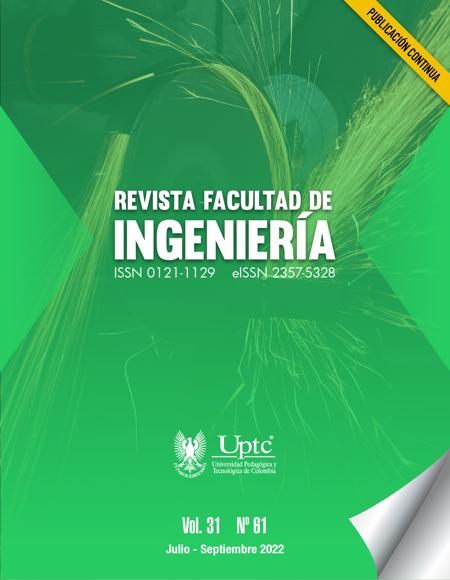Operational Risk Management in the Reverse Logistics Process of Used Vehicle Oil

Abstract
Currently, supply chains seek to establish strategies for the recovery and reincorporation of products that reach the end of their useful life. However, in these reverse logistics operations, certain events might generate financial losses for the company and adverse effects harmful to the environment and the community. In this paper, an identification, prioritization and control process is carried out for the most representative operational risks in the reverse logistics process of used vehicle oil. There is a high volume of this waste generated within the country, and poor management of the activities of recovery can generate environmental, economic, and social problems. The methodology used for the risk management process involves using the fuzzy QFD multi-criteria tool to evaluate the most common operational events within the process using the assessment of experts in the sector. Subsequently, a series of mitigation strategies are designed using the Ishikawa diagram. Among the most relevant results found in the study is the fact that the most relevant risks in the reverse logistics of used vehicle oil are the inadequate storage process, the absence of an adequate vehicle for transport, and the low quality of the waste. The research carried out establishes a reference framework for the risk management process in companies dedicated to the use and reuse of products in a closed-loop supply chain.
Keywords
fuzzy QFD, Ishikawa diagram, reverse logistics, risk management, supply chain, used vehicle oil
Author Biography
Andrés-Mauricio Paredes-Rodríguez
Roles: Investigation, Methodology, Witing-review & editing, Formal Analysis.
Andrés-Felipe Grisales-Aguirre
Roles: Investigation, Visualization.
David-Alberto Sánchez-Zambrano
Roles: Investigation, Validation.
References
- J. C. Osorio, D. F. Manotas, L. Rivera, “Priorización de Riesgos Operacionales para un Proveedor de Tercera Parte Logística - 3PL,” Información tecnológica, vol. 28, no. 4, pp. 135–144, 2017. https://doi.org/10.4067/S0718-07642017000400016 DOI: https://doi.org/10.4067/S0718-07642017000400016
- G. Ramírez-Flórez, N. Tabares-urrea, J. C. Osorio Gómez, “Fuzzy AHP for 3PL supplier’s performance evaluation considering risk,” Revista Facultad de Ingeniería, vol. 26, no. 45, pp. 165–172, 2017. https://doi.org/10.19053/01211129.v26.n45.2017.6424 DOI: https://doi.org/10.19053/01211129.v26.n45.2017.6424
- H. Fan, G. Li, H. Sun, T. C. E. Cheng, “An information processing perspective on supply chain risk management: Antecedents, mechanism, and consequences,” International Journal of Production Economics, vol. 185, pp. 63–75, 2017. https://doi.org/10.1016/j.ijpe.2016.11.015 DOI: https://doi.org/10.1016/j.ijpe.2016.11.015
- M. A. Coronado, M. Colorado, J. C. Osorio Gómez, “Gestión del riesgo operacional en el proceso de transporte de producto terminado en el sector azucarero,” Scientia Technica, vol. 24, no. 4, p. 604, 2019. https://doi.org/10.22517/23447214.22811 DOI: https://doi.org/10.22517/23447214.22811
- M. Er Kara, S. Ü. Oktay Fırat, A. Ghadge, “A data mining-based framework for supply chain risk management,” Computers and Industrial Engineering, vol. 139, e105570, 2020. https://doi.org/10.1016/j.cie.2018.12.017 DOI: https://doi.org/10.1016/j.cie.2018.12.017
- C. S. Tang, “Perspectives in supply chain risk management,” International Journal of Production Economics, vol. 103, no. 2, pp. 451–488, 2006. https://doi.org/10.1016/j.ijpe.2005.12.006 DOI: https://doi.org/10.1016/j.ijpe.2005.12.006
- M. Dai, L. Liu, “Risk assessment of agricultural supermarket supply chain in big data environment,” Sustainable Computing: Informatics and Systems, vol. 28, e100420, 2020. https://doi.org/10.1016/j.suscom.2020.100420 DOI: https://doi.org/10.1016/j.suscom.2020.100420
- P. Dutta, P. Suryawanshi, P. Gujarathi, A. Dutta, “Managing risk for e-commerce supply chains: An empirical study,” IFAC-PapersOnLine, vol. 52, no. 13, pp. 349–354, 2019. https://doi.org/10.1016/j.ifacol.2019.11.143 DOI: https://doi.org/10.1016/j.ifacol.2019.11.143
- M. A. Moktadir et al., “Analysis of Risk Factors in Sustainable Supply Chain Management in an Emerging Economy of Leather Industry,” Journal of Cleaner Production, vol. 20202, e124641, 2020. https://doi.org/10.1016/j.jclepro.2020.124641 DOI: https://doi.org/10.1016/j.jclepro.2020.124641
- X. Deng, X. Yang, Y. Zhang, Y. Li, Z. Lu, “Risk propagation mechanisms and risk management strategies for a sustainable perishable products supply chain,” Computers and Industrial Engineering, vol. 135, pp. 1175–1187, 2019. https://doi.org/10.1016/j.cie.2019.01.014 DOI: https://doi.org/10.1016/j.cie.2019.01.014
- K. Biçe, S. Batun, “Closed-loop supply chain network design under demand, return and quality uncertainty,” Computers and Industrial Engineering, vol. 155, e107081, 2021. https://doi.org/10.1016/j.cie.2020.107081 DOI: https://doi.org/10.1016/j.cie.2020.107081
- U. R. De Oliveira, L. Aparecida Neto, P. A. F. Abreu, V. A. Fernandes, “Risk management applied to the reverse logistics of solid waste,” Journal of Cleaner Production, vol. 296, e126517, 2021. https://doi.org/10.1016/j.jclepro.2021.126517 DOI: https://doi.org/10.1016/j.jclepro.2021.126517
- C. E. Peña, D. E. Carter, F. Ayala-Fierro, Toxicología Ambiental: Evaluación de riesgos y restauración ambiental, 2001.
- Asociación Colombia del Petróleo (ACP), Fondo de Aceites Usados (FAU), Informe FAU 2021, p. 14, 2021.
- Ministerio de Ambiente Vivienda y Desarrollo Territorial, Manual Técnico para el Manejo de Aceites Lubricantes Usados, 2006.
- Ministerio de Ambiente, Manual técnico para el manejo de aceites lubricantes usados de origen automotor e industrial, 2014.
- S. Senthil, K. Murugananthan, A. Ramesh, “Analysis and prioritisation of risks in a reverse logistics network using hybrid multi-criteria decision making methods,” Journal of Cleaner Production, vol. 179, pp. 716–730, 2018. https://doi.org/10.1016/j.jclepro.2017.12.095 DOI: https://doi.org/10.1016/j.jclepro.2017.12.095
- R. Cigolini, T. Rossi, “Managing operational risks along the oil supply chain,” Production Planning and Control, vol. 21, no. 5, pp. 452–467, 2010. https://doi.org/10.1080/09537280903453695 DOI: https://doi.org/10.1080/09537280903453695
- J. Castañeda Jiménez, J. A. Cardona Arias, “Diseño de una Red de logística Inversa para recolectar Aceite Vehicular Usado en la ciudad de Pereira implementando CVRP,” Scentia e Technica, vol. 22, no. 2, pp. 150–160, 2017. https://doi.org/10.22517/23447214.9243 DOI: https://doi.org/10.22517/23447214.9243
- J. C. Osorio, D. F. Manotas, L. Rivera, I. Canales, “Operational Risk Prioritization in Supply Chain with 3PL Using Fuzzy-QFD,” in New Perspectives on Applied Industrial Tools and Techniques, 2018, pp. 91–109. https://doi.org/10.1007/978-3-319-56871-3_5 DOI: https://doi.org/10.1007/978-3-319-56871-3_5
- M. Bevilacqua, F. E. Ciarapica, G. Giacchetta, “A fuzzy-QFD approach to supplier selection,” Journal of Purchasing & Supply Management, vol. 12, pp. 14–27, 2006. https://doi.org/10.1016/j.pursup.2006.02.001 DOI: https://doi.org/10.1016/j.pursup.2006.02.001